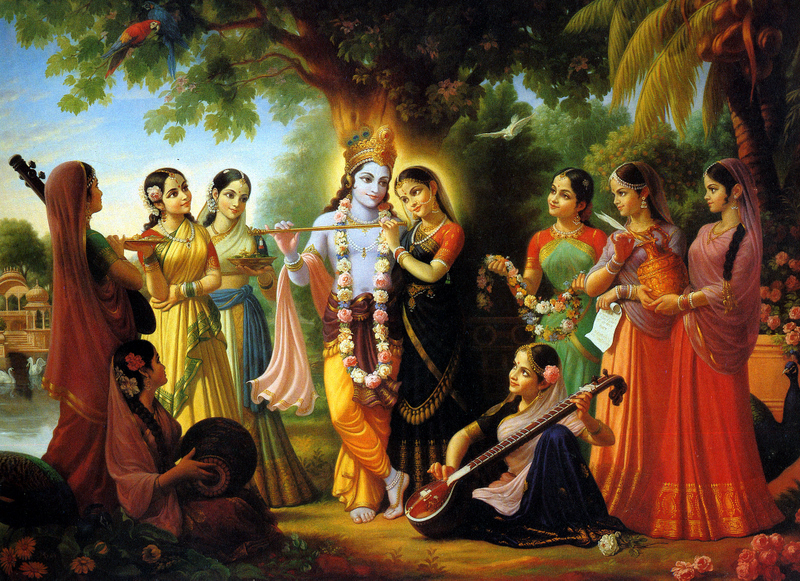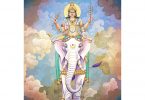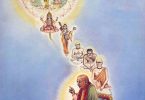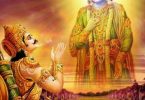Question: Recently, I had a nice debate with one of my close devotee friends here in the Boston temple over the position on our home altar of a photo of Sri Yasoda-Damodara relative to the position on the same altar of a photo of Lakshmi Devi – the eternal consort of Lord Narayana. This led to the following questions which I will be very grateful to get answers for.
1) What is the position of Yasoda Mata and Nanda Maharaj? A little research on this led me to Paramatma Sandarbha (anucheda 47 text 1&2) that says Garuda and such eternal associates of the Supreme Lord are still under category Jiva Tattva but that they are under the shelter of His internal potency eternally. However, this verse does not explicitly state Mother Yasoda or Nanda Maharaja. Can we extend this to them? Are they not Jiva Tattva?
Answer by Romapada Swami: Commonly, Yasoda is considered sakti-tattva or an expansion of Krishna’s internal potency, not jiva-tattva.
Srila Prabhupada explains in detail the position of Mother Yasoda in the purport of SB 10.9.20 – 21
Please find the purports below.
“There are different types of liberation, such as sayujya, salokya, sarupya, sarsti and samipya, but vimukti means “special mukti.” When after liberation one is situated on the platform of prema-bhakti, one is said to have achieved vimukti, “special mukti.” Therefore the word na is mentioned. That exalted platform of prema is described by Sri Caitanya Mahaprabhu as prema pum-artho mahan, and mother Yasoda naturally acts in such an exalted position in loving affairs. She is therefore a nitya-siddha devotee, an expansion of Krsna’s hladini potency, His potency to enjoy transcendental bliss through expansions who are special devotees (ananda-cinmaya-rasa- pratibhavitabhi). Such devotees are not sadhana-siddha.” Sb 10.9.20
“Krsna does not leave Vrndavana even for a moment. The vrndavana-vasis – mother Yasoda, Krsna’s friends and Krsna’s conjugal lovers, the younger gopis with whom He dances – have very intimate relationships with Krsna, and if one follows in the footsteps of these devotees, Krsna is available. Although the nitya-siddha expansions of Krsna always remain with Krsna, if those engaged in sadhana-siddhi follow in the footsteps of Krsna’s nitya-siddha associates, such sadhana-siddhas also can easily attain Krsna without difficulty. But there are those who are attached to bodily concepts of life. Lord Brahma and Lord Siva, for example, have very prestigious positions, and thus they have the sense of being very exalted isvaras. In other words, because Lord Brahma and Lord Siva are guna-avataras and have exalted positions, they have some small sense of being like Krsna. But the pure devotees who inhabit Vrndavana do not possess any bodily conception. They are fully dedicated to the service of the Lord in sublime affection, prema. Sri Caitanya Mahaprabhu has therefore recommended, prema pum-artho mahan: the highest perfection of life is prema, pure love in relationship with Krsna. And mother Yasoda appears to be the topmost of devotees who have attained this perfection” SB 10.9.21
2) What is the position of Srimati Radharani? What is the position of Lakshmidevi? I understand they are not under the category of Jivas but don’t understand beyond that. Is Srimati Radharani internal potency herself?
Yes Srimati Radharani is the internal potency of Lord Krsna. Lord Krsna’s Pleasure Potency is called Hladini, so this spiritual energy of Krsna’s pleasure potency, Hladini, is Srimati Radharani Who is always increasing the transcendental pleasure of Krsna by Her super-excellent loving devotional service. Radharani is the most confidential servant of the Lord.
The internal potency of the Lord and the Lord are non-different. The Lord and His potency are non-different, just like the sun and the shine of the sun are non-different. You’re not going to find the shine without the sun, nor the sun without the shine. Similarly, you’re not going to find Srimati Radharani without Krsna, or Krsna without Srimati Radharani.
Srimati Radharani is also the source of the other goddesses, who are expansions of Her. Just as Lord Krishna is the source of all other expansions and incarnations of God, Radharani is the source of all other expansions of the energies of God, the shaktis, or other goddesses. Thus, Vishnu, Rama, even Shiva are all expansions of the one Supreme Being, and similarly Lakshmi, Sita, and even Durga (her “shadow expansion”) are all expansions of this Supreme Feminine form of God, Radharani.
3) This final question is unrelated to the subject but equally important to me. I have been advised by devotees not to have Lakshmidevi and Radharani in the same altar because “that is mixing moods” but I am merely accommodating for my wife’s desire to do so and don’t want to make her feel it is not her altar too by deciding without her buy-in on such changes. My wife also wants to have demigods like Lord Ganesha on the altar which I did convince her otherwise. However, although I am not initiated yet, I do feel I might be doing something wrong by such altar arrangement because of the concept of “fidelity to Parampara”. How important is it for me to be so? What does fidelity to Parampara mean exactly?
It is not wrong to have Lakshmi devi also on the same altar. Radha Krishna and Lakshmi Narayana are of the same visnu-tattva category, unlike the demigods, who therefore are not to be placed on the same altar as Radha Krishna.
However, one should understand the position of Lakshmi devi.
As Krishna is the original personality of Godhead, so Srimati Radharani is His hladini sakti manifestation, or His eternal consort. Since Narayana in Vaikuntha is an expansion of Krishna, we can say that Lakshmi is also an expansion of Srimati Radharani. For that matter, all the goddesses of fortune in the spiritual realm are manifestations of Srimati Radharani. Each of the expansions of the Supreme Lord have their consorts, or energetic expansions. They go by various names, but the original Personality of Godhead is Krishna, and His eternal consort is Srimati Radharani.
Regarding Fidelity to Parampara:
Lord Krishna mentions in BG 4.2, “This supreme science was thus received through the chain of disciplic succession, and the saintly kings understood it in that way. But in course of time the succession was broken, and therefore the science as it is appears to be lost.”
If one wants to understand Bhagavad-gita, he cannot take help from other methods. He must understand it as prescribed in Bhagavad-gita itself, by understanding it as Arjuna understood it. If we wish to understand Bhagavad-gita in a different way, or give an individual interpretation, that may be an exhibition of our scholarship, but it is not Bhagavad-gita.
Srila Prabhupada mentions in Parampara:_Knowledge_Through_Disciplic_Succession “As soon as the Gita is interpreted according to the motive of an individual, the purpose is lost. It is stated that we cannot attain the conclusion of the Vedic literature by the force of our own logic or argument. There are many things which do not come within the jurisdiction of our sense of logic. As far as scriptures are concerned, we find different scriptures describing the Absolute Truth in different ways. If we analyze all of them, there will be bewilderment. There are also many philosophers with different opinions, and they’re always contradicting one another. If the truth cannot be understood by reading various scriptures, by logical argument or philosophical theories, then how can it be attained? The fact is that the wisdom of the Absolute Truth is very confidential, but if we follow the authorities, it can be understood.”
One must have full faith in the words of the spiritual master and similar faith in the Supreme Personality of Godhead. Then the real knowledge of atma and Paramatma and the distinction between matter and spirit will be automatically revealed. This atma-tattva, or spiritual knowledge, will be revealed within the core of a devotee’s heart because of his having taken shelter of the lotus feet of a bona fide devotee of Lord Krsna.
So fidelity to Parampara means following the bona fide disciplic succession and to not stray from Srila Prabhupada’s teachings after one has been given so much mercy by His Divine Grace, and to take primary siksa from those who are followers of Srila Prabhupada.







